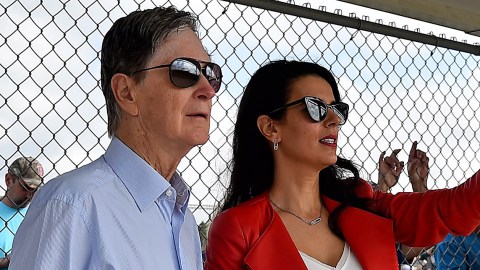 If people who honestly should know better are this perplexed by a clock, it’s probably a good idea to take their analysis of other things with a grain of salt.
If people who honestly should know better are this perplexed by a clock, it’s probably a good idea to take their analysis of other things with a grain of salt.
These NBA playoffs have featured a lot of inexplicable things. Who knew Tim Duncan still had this in him? Who thought LeBron James could actually get better? When will Tony Parker ever get his due as one of the greatest players, never mind point guards, of his era?
One thing that apparently is far more confusing than it should be, however, is the eight-second violation and its relationship to the 24-second shot clock. Announcers and fans are constantly getting hung up on this one little detail, as though it is rocket science. Reggie Miller and Steve Kerr were befuddled for a good two minutes during Game 2 of the Heat-Pacers series, throwing into doubt the value of a UCLA or Arizona education.
The rule in question, in case it’s not your job to watch every moment of every NBA playoff game, is at what point on the shot clock referees are supposed to blow the whistle when the offensive team fails to get the ball over halfcourt in eight seconds. Subtraction dictates that this occurs when the shot clock reads :16. Simple. Twenty-four minus eight equals 16. Right?
Wrong.
This has thrown many a color analyst for a loop. Miller in particular cannot wrap his head around the idea that the eight-second violation occurs when the shot clock reads :15, not :16. At first, the wrinkle might seem contradictory. Seriously, though, it’s not that hard to understand.
If you have ever used a stopwatch, or wear a $14.99 Casio because you’re a cheapskate like me, you probably already get the concept. Hit “start” on the watch. Does the timer immediately go to :01? Of course not. If the watch has tenths or hundredths of a second, it counts upward. The seconds place reads :00 until 99 one-hundredths of a second becomes a full second. So when the timer reads :00.9, we know it is closer to :01 than :00, even though the seconds place is all zeroes.
The countdown clock on the shot clock works the same way, only backwards. For the first 19 seconds of the possession, the shot clock posts only full seconds. When there are 16 seconds on the shot clock, there are actually 16 seconds plus a few tenths. If the refs called an eight-second violation as soon as the clock hit :16, they would actually be whistling the play dead at :16.9 — robbing the offensive team of almost a full second.
In the final five seconds of the shot clock, tenths of a second get added. Again, think of the stopwatch. If the players, officials, coaches and fans could not read tenths of a second at the end of the clock, the shot clock would read :00 for a full second before the buzzer sounded. Instead, we see the timer count down in tenths of a second to ultimate zero, :00.00. Knowing how many tenths of a second are on the clock is vital, so a team knows whether it has enough time for a shot or just a tip-in attempt.
Hopefully, we all get it now, even Mr. Miller. In case this explanation simply sounds like a jumble of numbers and mathy-sounding words, take a minute to look at the video below by YouTube user PyroRodney. It shows exactly how a shot clock behaves differently when it has full seconds versus tenths of a second, and why an eight-second violation should be whistled when the shot clock reads :15.
Have a question for Ben Watanabe? Send it to him via Twitter at @BenjeeBallgame or send it here.



